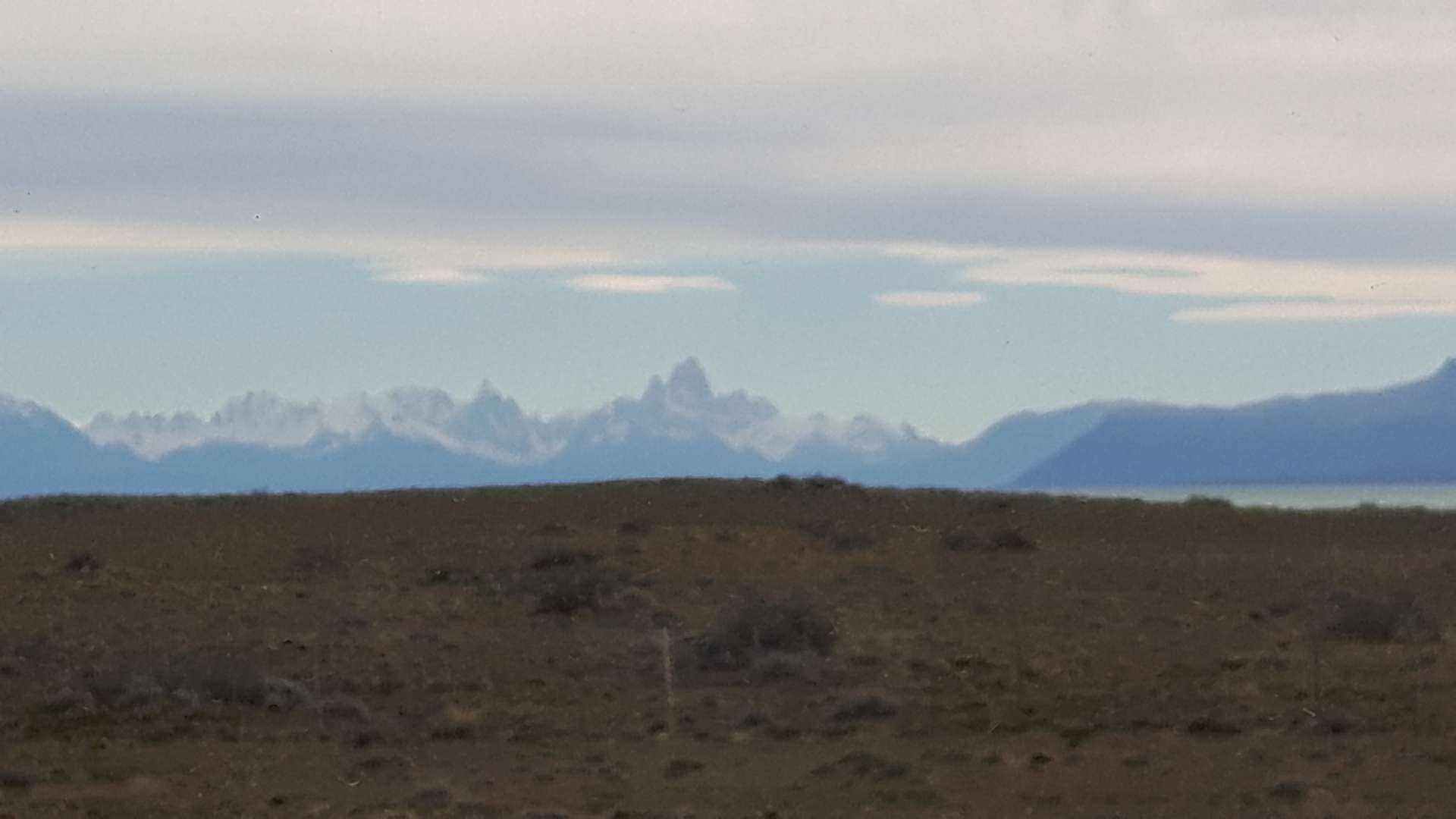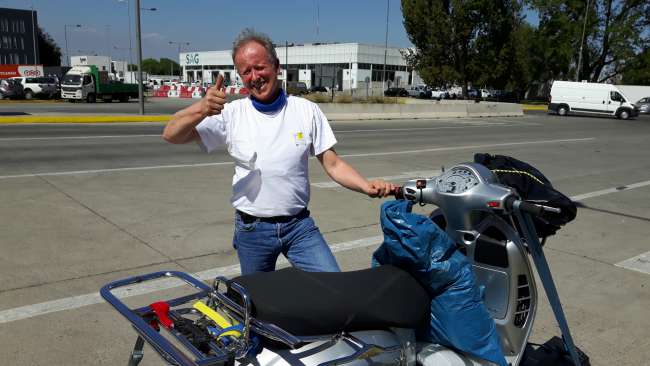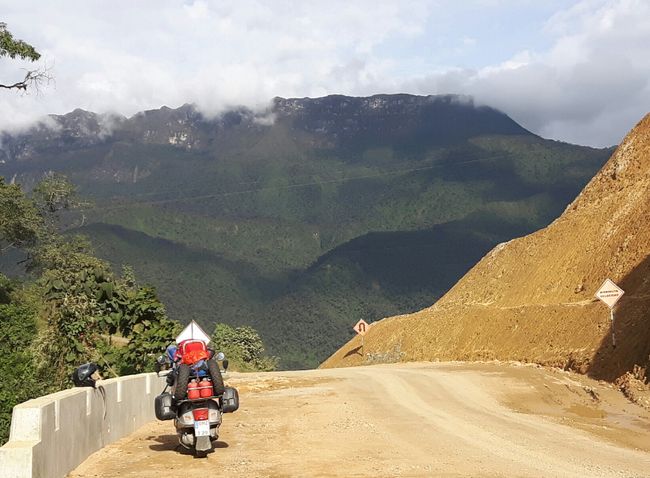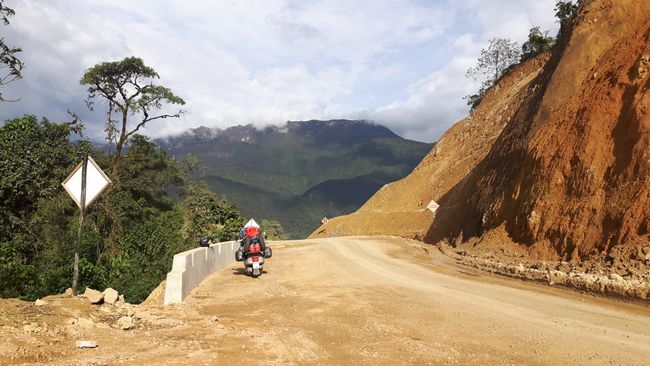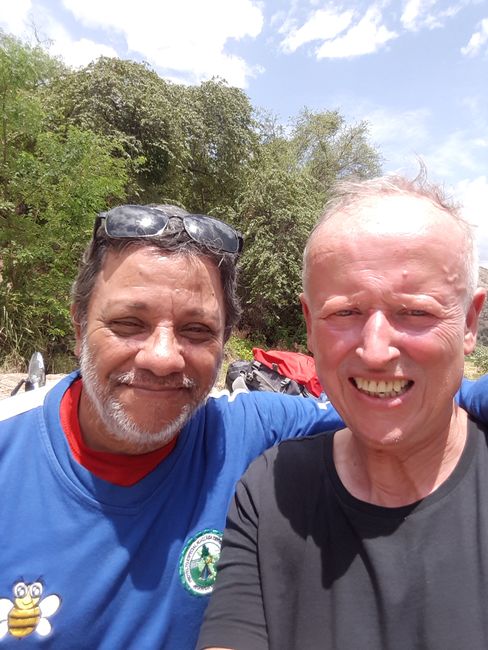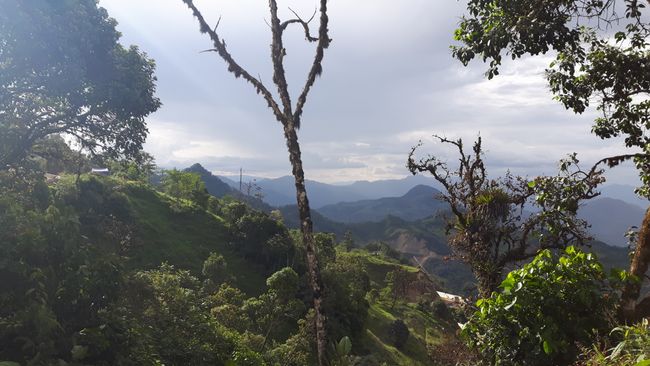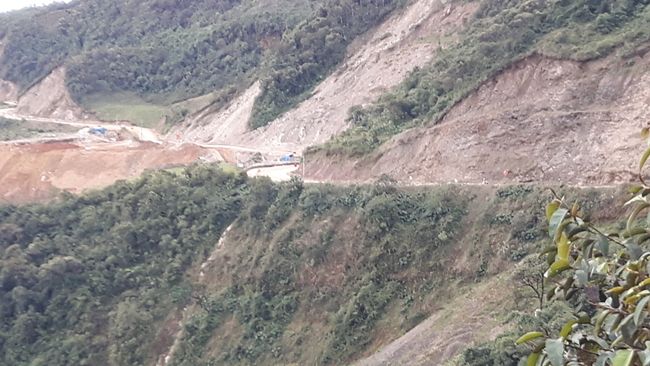04.10.: Cutervo - 2,650 m -
Közzétett: 07.10.2017
Feliratkozás a hírlevélre
04.10.
Today I had a lot of luck in the game, otherwise I would have drifted quite far to the west - to the coast.
My
hostel owner points out the village of Chiple to me, that I have to turn left there to get on the N3 to Cajamarca. In Chiple, I miss the turn. There are too many driving distractions on the road. Potholes and bumps that are not only piled up at the beginning of the village entrance, but also replace pedestrian crossings or facilitate merging into traffic when exiting properties.
So I drive past the intersection without knowing that I am embarking on a serious course change. The navigation system, which I keep looking at in Chiple, suggests that everything is okay and at some point I stop looking. Later: the route is being recalculated.
I should have reacted at the latest here, but I am distracted by the road quality and the landscape.
And so I drive about 50 km in the western direction. Luckily, I find a shady spot and take a break. Not long after, a Peruvian motorcyclist joins me, who tells me that he wants to travel to the south of Chile. He has even less power in his motor and looks quite rugged. I should have been suspicious already. Chile?
I don't want to go there. I want to go in the opposite direction. Eventually, I take out my map of Peru and determine my position. Yes, and it turns out that I missed the intersection in Chiple. Luckily, I find out here already.
We say goodbye, not without taking a photo before.
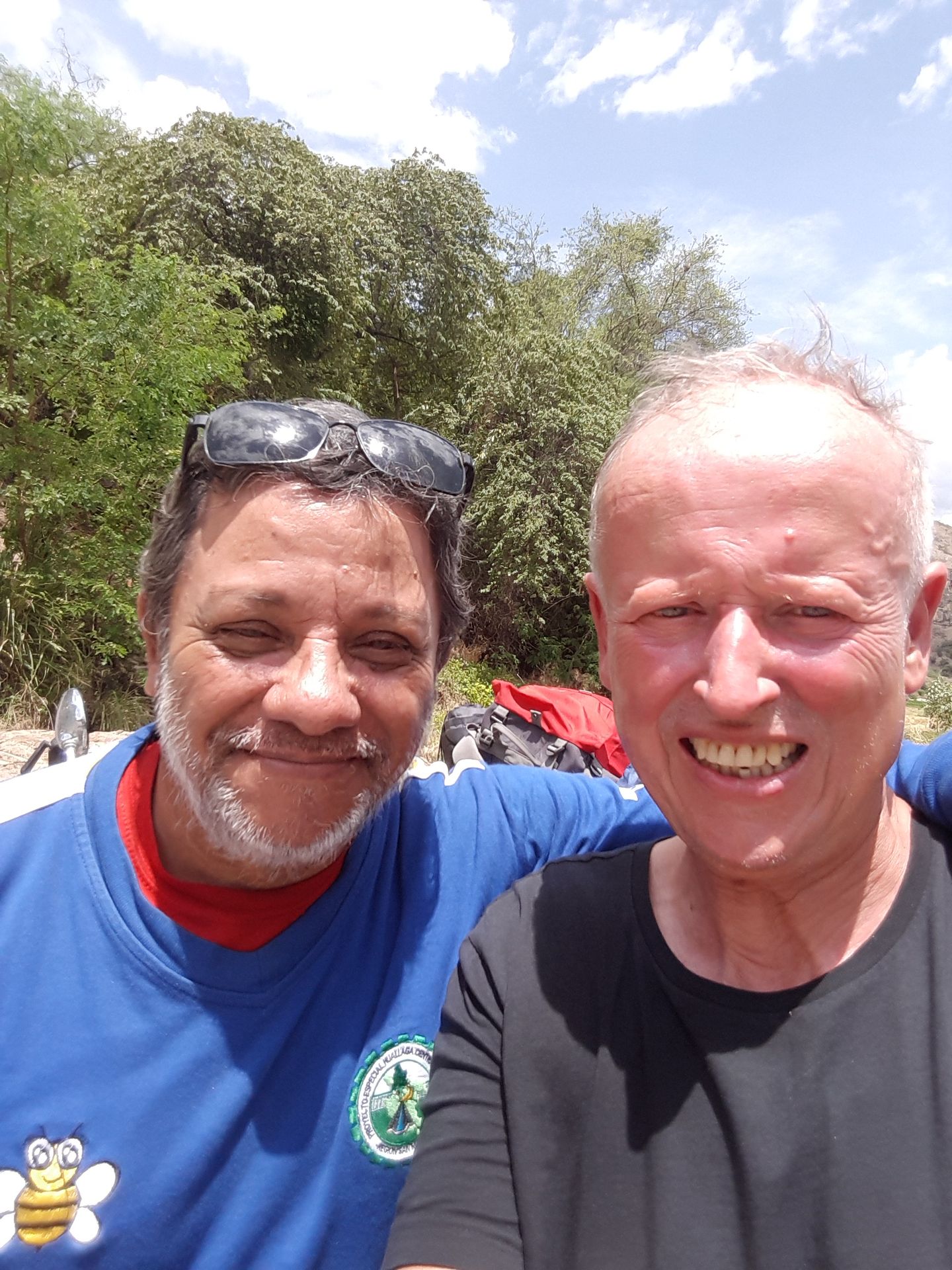
I arrive in Chiple again after half an hour, miss the intersection again, refuel first and ask for directions to Cajamarca. I use my map as a guide and now want to know exactly where this intersection is in Chiple.
Third attempt: now I see the sign, turn left and find myself on a road that is under construction. It is the N3, which I already know from my tours in southern Peru.
What is offered to me here does not look good. Gravel with sharp stones, potholes, oncoming trucks and pickups that leave a plume of dust behind them. The temperatures are still tropical, I can only move forward at a more or less walking pace. That's how it goes for the next 56 kilometers. I get to know the most different road surfaces - especially freshly piled up red sand, which was leveled by the road machines shortly before. By now, I have been on the road for two hours, the sun has long disappeared behind thick clouds - it is raining and getting chilly.
In some places, the road surface turns into a muddy track, which makes driving even more adventurous. In addition, there are 30 cm high speed bumps that can only be taken with a lot of momentum. A lot of momentum on a slippery road surface? I manage it and continue onwards.
The 12-inch wheels might be the reason why I am looked at with pity in some places. Because they leave me no room to maneuver. They slide - whether in mud, gravel or loose gravel - immediately out of the track. No countersteering or accelerating helps - only taking my foot off the gas and using a lot of finesse, stretching both legs out and balancing to bring the Vespa back on track. And - now the commercial break - the Heidenau tires that the manufacturer provided me with - are more than capable of withstanding the strain!
The construction traffic - especially the heavier trucks loaded with sand - doesn't take much consideration, the pickup drivers who enjoy finally using their four-wheel drive technology come sliding towards me in left-hand bends - they can't see me on their side yet. My navigation system still shows 15 km until an intersection, from which I hope that driving will be easier from there. But it continues like this all the way to Cutervo. Once again, I experience beautiful landscapes.
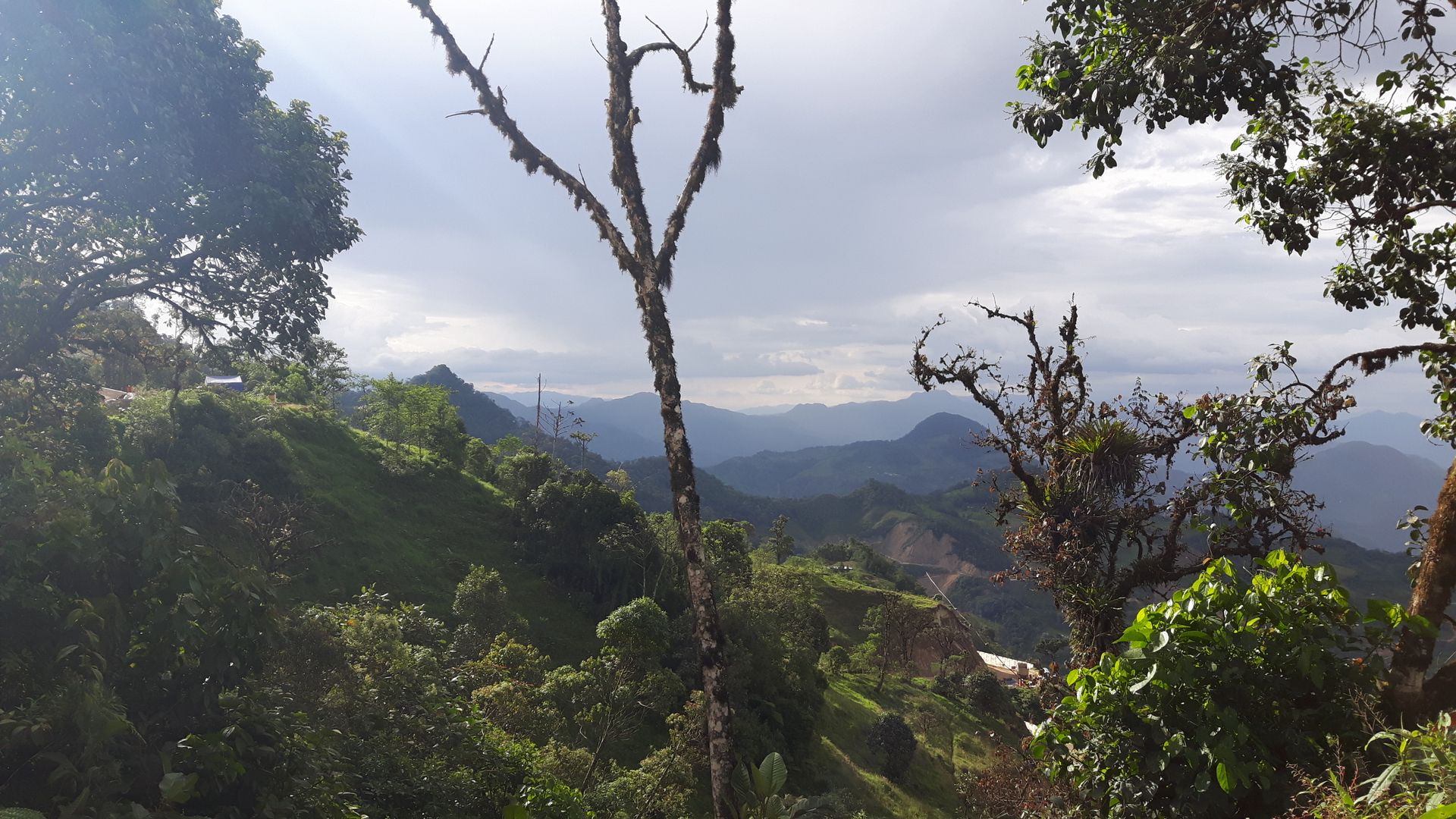
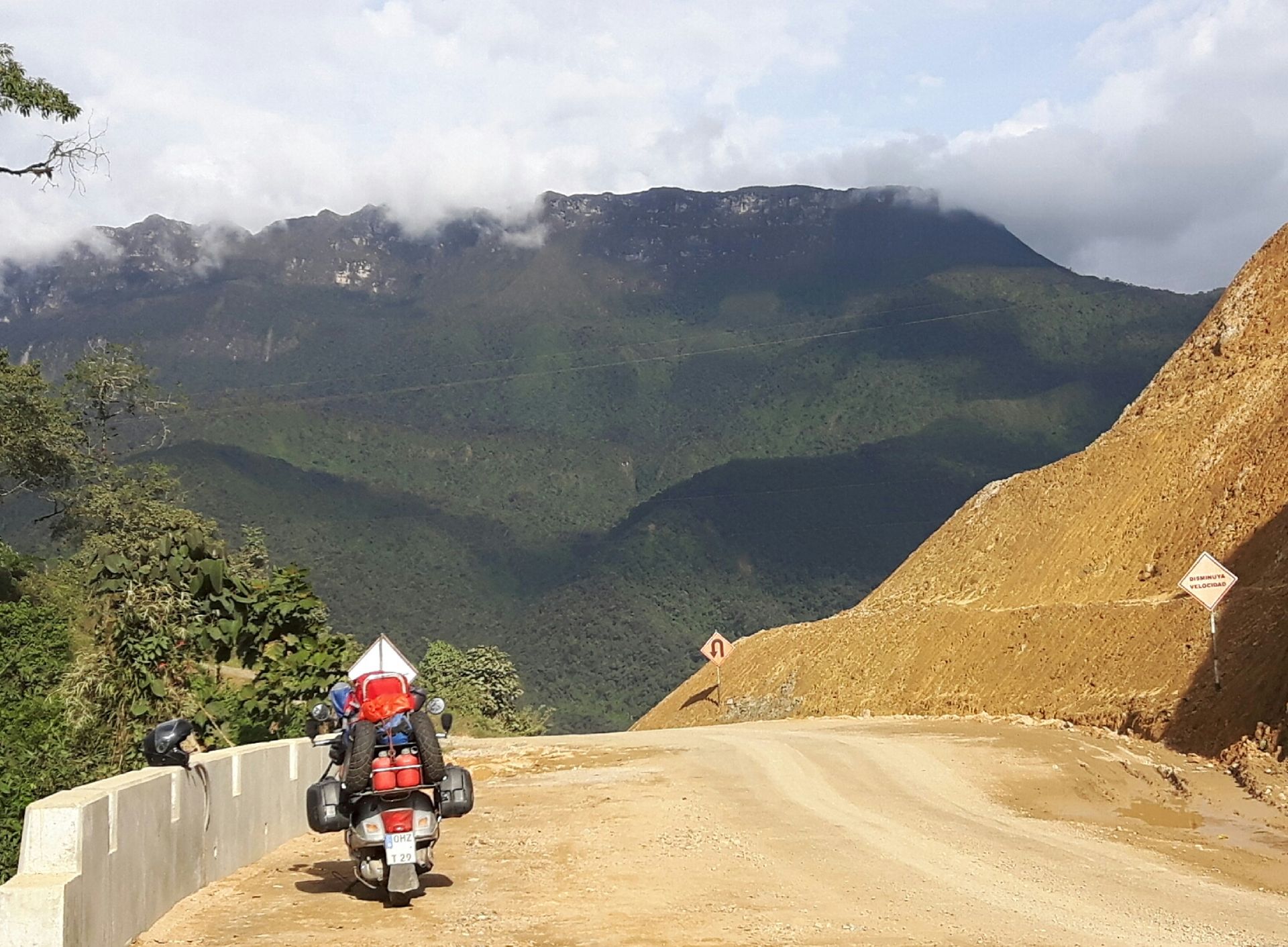

The 3N is carved into the mountains
Tropical temperatures are long gone. We are now at an altitude of at least 2,000 m. And when the clouds cover the sun, it is really cold. And that within a few hours. 30° down to 15°.
I have no idea what to expect from Cutervo. Is it a mountain village with three houses and no hostel or hotel? After all, I'm already encountering the first mototaxis and even the yellow taxis. This raises hopes that it is a larger village after all. I pass two Peruvian women who are transporting large quantities of feed grass, wrapped in blankets. It goes uphill and I wonder what they want with it. But after the next turn, a hungry horse on the mountainside looks at me, hoping for more tasty food than what it had to eat all day. Horses and donkeys are a very important livelihood for the campesinos - the rural population. They don't have agricultural machinery, at most the three-wheeled motorcycles with a loading platform. These are used for transporting feed sacks, construction materials, overlong bamboo poles, and even pigs. They don't drive fast, but they are strong and off-road capable. And everywhere I see neatly stacked and freshly shaped clay bricks again. They provide protection against the cold because they store the sun's heat during the day for the night and preserve the coolness of the night for the day. But what always makes me wonder is that aluminum sheets are used for the roof covering, which heat up very quickly. I experienced this oven-like heat during my stop at the border. I wanted to freshen up in the shade and was surprised that it wasn't pleasantly cool here. Looking up, it became clear to me that the corrugated iron roofs were to blame. If there are bamboo poles, there are also bamboo leaves that can be used as roof covering. It is sometimes done...
The last stretch to Cutervo is somewhat drivable. This place turns out to be a bustling place with a plaza, a church, and many one-way streets that my navigation system does not know. The Peruvians take my driving against the permitted direction with composure. The mototaxis can easily dodge, the few cars that drive here occasionally have to slow down, which is accompanied by loud cursing from the drivers in my direction. I quickly find a hotel that can accommodate the Vespa as well, and I am glad that I managed to arrive before it gets dark once again.
The hotel is ice-cold, the construction with open window gaps and an open staircase is designed for the summer - in winter, only the woolen ponchos that are worn here help, and maybe an electric stove for the receptionists.
My room is a refrigerator, the shower water is rather lukewarm. The evening program is clear. Quickly eat something and then warm myself up again with my body heat in the heavy and unwieldy horse blankets.
This day was a challenge for the Vespa and for me as the driver. With the old drive rollers, I would have failed utterly.
Feliratkozás a hírlevélre
Válasz

Peru utazási jelentések
